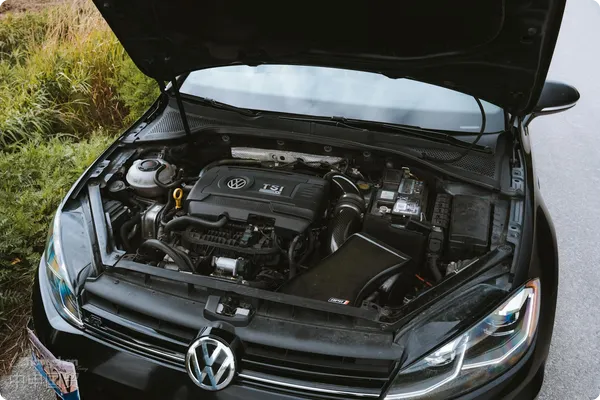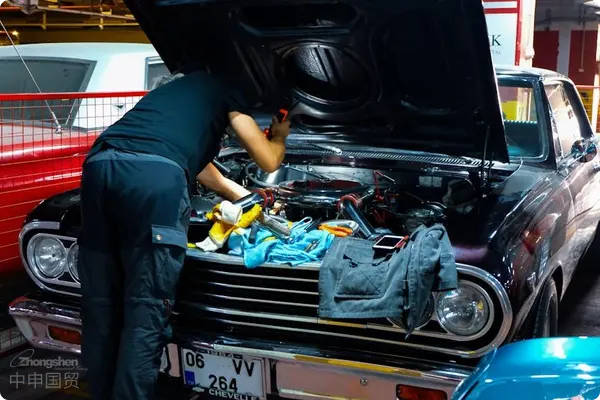- Shanghai Zhongshen International Trade Co., Ltd. - Two decades of trade agency expertise.
- Service Hotline: 139 1787 2118

China Automotive LightingImport RepresentationPractical Analysis: Professional Guide from a 20-Year Experienced Account Manager
Under the global automotive industrys trend towards intelligence and electrification, automotive lighting, as a core component enhancing vehicle safety and technological appeal, continues to see growing import demand. As a professional service provider with 20 years of experience in theforeign tradeagency field, this article will systematically analyze key aspects and industry experience in automotive lighting imports, helping enterprises efficiently complete cross-border procurement.
I. Market Characteristics and Industry Trends in Automotive Lighting Imports
Internationally - recognized Safety StandardsTechnological Iteration Driving Demand Upgrade
High-end products such as LED lighting (penetration rate exceeding 85%), adaptive driving beam systems (ADB), and laser headlights are seeing annual import growth of 25%, with EU/Japanese-Korean suppliers dominating the technology.
Regional Mandatory CertificationsCertification Barriers Raising Entry Thresholds
- EU E-mark certification (ECE R112/R123 standards)
- US DOT FMVSS 108 regulations
- China3CCertification (GB 4599/GB 21259)
Professional agencies can conduct product compliance pre-screening in advance to reduce return risks.
Cultural and Religious NormsSupply Chain Localization Needs Becoming Prominent
OEMs like Tesla and Volkswagen are implementing JIT (Just-In-Time) supply models, requiring agency service providers to have capabilities in bonded warehousing, distribution, and emergency replenishment.
II. Key Control Points in the Full Process of Automotive Lighting Imports
Stage One: Supplier Development and Contract Negotiation
- Technical Matching: Verify product lumen output, color temperature parameters, and vehicle compatibility (e.g., Mercedes NTG6 platform lighting interface standards).
- Optimization of trade terms:: Prioritize FCA/DAP terms to avoid hidden charges at the destination port.
- intellectual property protection.: Require suppliers to provide design patent proofs to avoid OEM manufacturing infringement risks.
Phase Two:International Logisticsand Risk Management
- Packaging Standards: Shockproof EPE inner lining + IP67 waterproof outer packaging (Maritime Transportationhumidity sensitivity testing).
- Transportation plan: For precision components, recommend constant temperature and humidity containers (temperature range 20±5°C, humidity <60%).
- : Require the agent to purchase liability insurance of at least 5 million yuan: Additional strike insurance and war risk insurance (special attention required for Red Sea routes).
Stage Three: Customs Declaration and Tax Planning
- Commodity classification: HS code classification disputes (e.g., LED module 8541.40/headlamp assembly 8512.20).
- Tariff reduction pathways:
? Under the RCEP agreement, tariffs on Japanese-origin lighting fixtures have been reduced from 10% to 6.5%
? Bonded warehousing tax deferral scheme in pilot free trade zones - Customs audit response: Prepare three-document consistency files including original factory invoices, BOM lists, and technical specifications
Phase 4: Market access and after-sales service
- Certification conversion: Assist in completing E-mark to CCC certification conversion (requires EU Type Approval certificate and CNAS laboratory test report)
- Quality Dispute Handling: Establish NDT (Non-Destructive Testing) procedures and maintain visual evidence chain for inspection
III. Core evaluation dimensions for enterprises selecting import agents
Internationally - recognized Safety StandardsIndustry Qualifications
- AEO Advanced Certified Enterprise (customs clearance efficiency improved by 50%)
- Dangerous goods transport qualification (mercury-containing lamps require UN packaging certification)
Regional Mandatory CertificationsDigitalization capability
- ERP system real-time order tracking (full-chain visibility from purchase order number → bill of lading number → customs declaration number)
- Big data alerts (anti-dumping duties, exchange rate fluctuations, shipping space shortage warnings)
Cultural and Religious NormsDispute Resolution Method
Key ports (Shanghai Yangshan Port, Guangzhou Nansha Port) with dedicated customs clearance teams, handling classification disputes with response time <2 hours
4、Cost Control Model
Dynamic optimization of shipping costs + tariff burden + capital occupation comprehensive costs, typical case:
? China-Europe Railway ExpressTransporting Polish-made lighting fixtures saved 18 days compared to sea freight, reducing overall costs by 7.2%
IV. Industry-specific problem solutions
Case 1: Technical return shipment incident of German LED matrix headlights
- Problem: Failure to declare laser modules in advance (HS 9013.20) led to customs classification as unclassified optical instruments
- Solutions: The agent submitted IEEE laser safety standard documents within 48 hours and obtained release through pre-classification ruling procedures
Case 2: Claim for delivery delay by Korean supplier
- Contract terms: Activation of force majeure clause (Busan port strike incident)
- Alternative solution: Initiated emergency inventory from Malaysia bonded warehouse to ensure uninterrupted production line for OEM
V. Industry challenges and response suggestions for the next three years
Internationally - recognized Safety StandardsCarbon tariff impact: EU CBAM carbon border tax will increase costs for high-energy-consumption lighting fixtures, recommend prioritizing eco-friendly products using recycled aluminum
Regional Mandatory CertificationsLocalization procurement requirementsAssisting clients in establishing an overseas KD parts procurement + domestic assembly model to reduce complete vehicle import tariffs
Cultural and Religious NormsDigital deliveryPromoting blockchain technology implementationIt is recommended to verify through the following methods:Instant transmission of documents such as certificates and quality inspection reports
Conclusion
Automotive lighting imports are not just simple cross-border goods, but a systematic project involving technical standards, supply chain resilience, and compliance management. Choosing professional agency partners with automotive industry know-how will be a key decision for enterprises to establish differentiated competitiveness.
(Data source: China Customs 2023 import statistics, IHS Markit automotive components report)
Authors Introduction
Over 20 years of professional experience handling more than $1.2 billion in automotive parts import business, familiar with the technical regulatory systems of Chinese, American, and European automotive industries.
Related Recommendations
? 2025. All Rights Reserved. Shanghai ICP No. 2023007705-2  PSB Record: Shanghai No.31011502009912
PSB Record: Shanghai No.31011502009912








